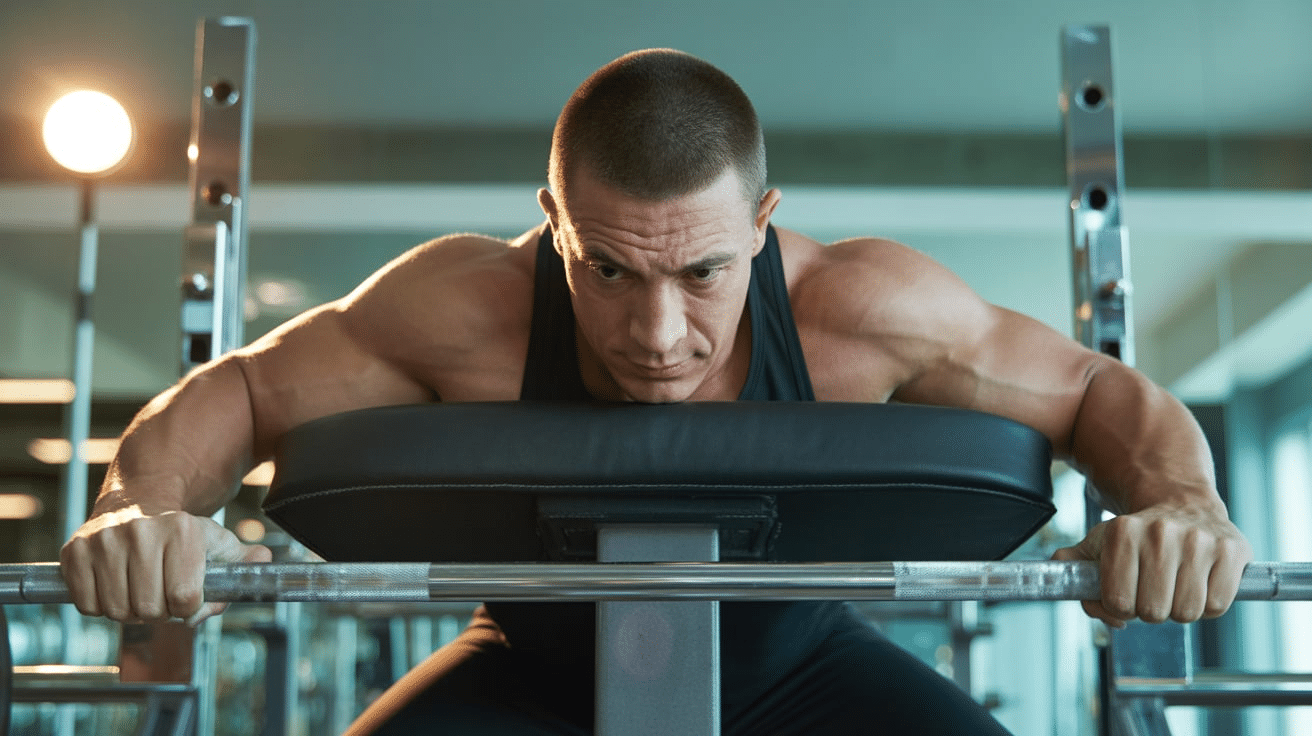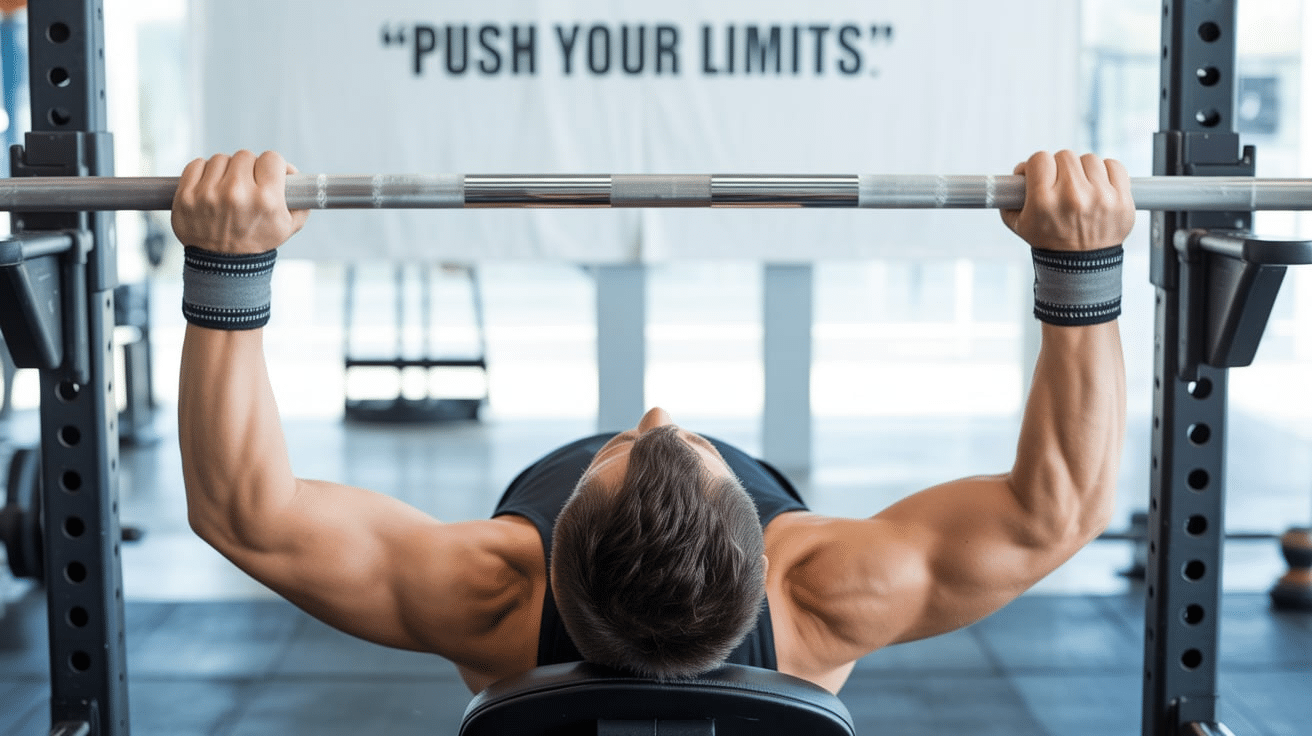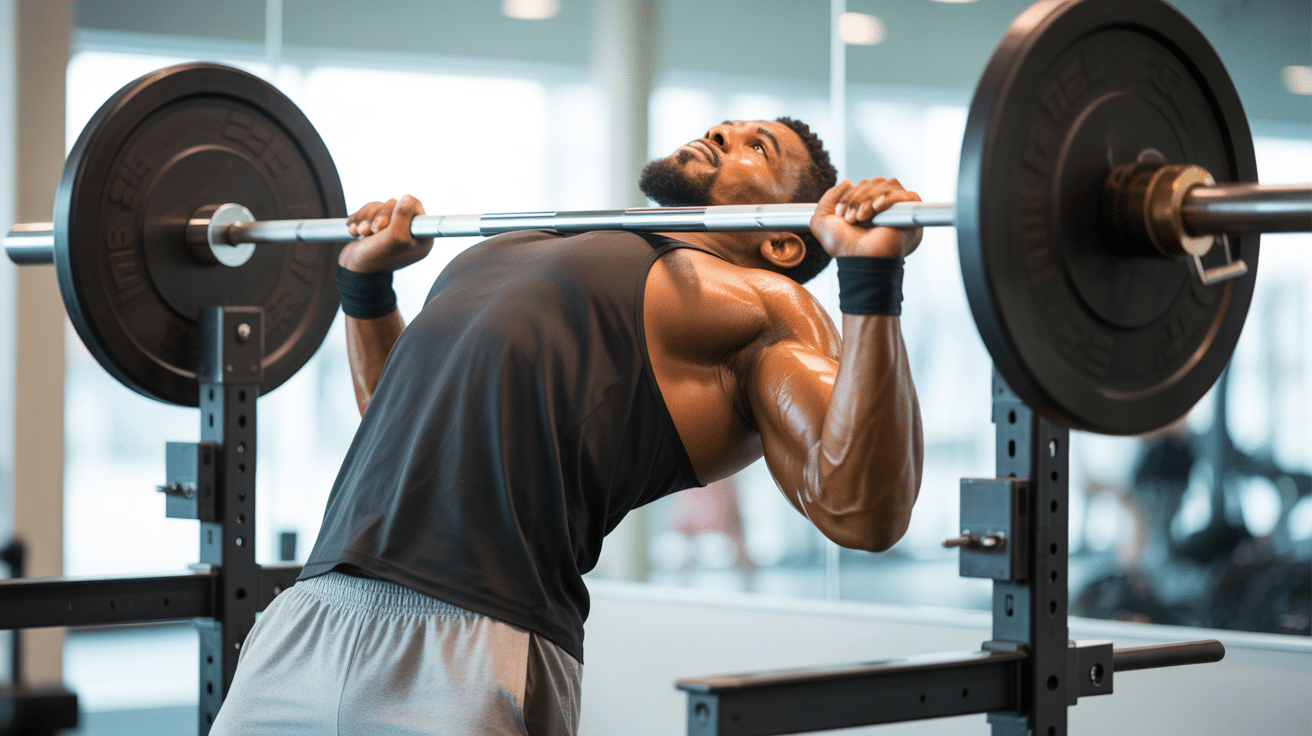Have you ever been excited for chest day only to feel shoulder pain when benching?
I know how frustrating it is when your lift feels solid, but your shoulder starts complaining before your muscles do. That ache can stick around and make you wonder if you’re doing more harm than good.
In this post, I’ll break down the most common reasons bench pressing leads to shoulder trouble. You’ll get simple fixes you can use right away, plus warm-ups and training tips that keep your shoulders strong for the long run.
My goal is to help you bench with confidence and get back to training without nagging pain holding you back.
Shoulder Pain When Benching: Quick Answer
Most pain during the bench press comes from poor position, bar path, or loading. Rolling your shoulders forward, flaring elbows, or pressing straight down to your chest puts unnecessary stress on the joint.
Quick fixes to try now:
- Set your shoulder blades back and down.
- Use a grip that keeps forearms vertical at the bottom.
- Lower the bar to the lower chest, not the upper chest.
- Control the rep: 2–3 seconds down, pause, then smooth press.
- Swap the barbell for dumbbells or try a floor press.
- Stop if you feel sharp pain, weakness, or popping.
Shoulder Hurts When Benching: What Really Hurts?
When your shoulder hurts during the bench press, the pain doesn’t always come from the same place. It can show up at the bottom of the lift, halfway through, or even after you’re done.
Pinpointing when and where it happens is the first step to understanding what’s really going on inside your shoulder.
| When Pain Appears | Likely Source | Why It Happens | Quick Adjustment |
|---|---|---|---|
| Bottom of the lift | Rear delts, rotator cuff, biceps tendon | Elbows flared, bar too high on chest | Narrow grip, elbows at 30–45°, lower to lower chest |
| Mid-range | Lateral delts, labrum | Bar path drifts, elbows not stacked | Keep elbows under the bar, stabilize wrists |
| Top/lockout | Front delts, bursae | Straight-up bar path, narrow grip | Small arc back toward the rack, soft lockout |
| Hours later / next day | General tissue irritation | Overload or poor recovery | Review volume, warm-up, recovery habits |
Common Causes of Pain in Shoulder During Bench-Press

Knowing why pain happens is the first step to fixing it. Most shoulder issues in the bench press come from a few common problems.
1. Poor Bench Technique
Form errors are one of the biggest contributors to shoulder pain. When elbows flare out too wide, the shoulder joint is forced into an unstable position, increasing strain on the tendons and joint capsule.
Failing to retract and depress the shoulder blades reduces stability and shifts more stress onto the front of the shoulder rather than distributing the load across the chest and back.
2. Too Much Volume / Overuse and Insufficient Recovery
Shoulder pain often comes from doing too much, too soon. Repeated heavy pressing sessions without enough recovery time can fatigue the rotator cuff and surrounding stabilizers.
Over time, this leads to inflammation, microtears, and general overuse injuries. Without proper rest days and balanced programming, even good form won’t prevent irritation from setting in.
3. Rotator Cuff Tendon Irritation or Impingement
The rotator cuff muscles help stabilize the shoulder during pressing. If these tendons become irritated, or if the space under the acromion is narrowed during movement, the tissue can become “pinched.”
This impingement often shows up as sharp pain at the front or side of the shoulder, especially when lowering the bar. Weak or fatigued rotator cuff muscles increase this risk.
4. AC Joint Irritation
The acromioclavicular (AC) joint is where the collarbone meets the highest point of the shoulder. Heavy bench pressing, especially with high frequency, can irritate this joint and cause pain that feels concentrated at the top or front of the shoulder.
Lifters often notice this discomfort when locking out a rep or after multiple heavy pressing sessions in a week.
5. Muscle Imbalances
Many lifters emphasize pressing strength but neglect the muscles of the upper back, rear delts, and scapular stabilizers.
When these muscles are weak, they cannot properly support the shoulder joint during pressing. This imbalance leaves the rotator cuff overloaded and increases the chance of joint irritation or instability. Strengthening the back and rear shoulder can greatly reduce pain.
6. Past Injuries or Structural Issues
Shoulders that have a history of injury are more vulnerable during pressing. A torn labrum, past dislocation, or general joint instability can resurface under heavy load.
These structural issues often make the shoulder feel “loose” or unstable, and bench pressing can aggravate the condition. In such cases, careful modification and medical evaluation are key to safe training.
7. Grip Width, Bar Path, Bench Angle, Mechanical Contributors
How you set up your bench press matters just as much as how much weight you lift. A grip that’s too wide forces the shoulders into external rotation and can stress the joint.
A bar path that moves too high toward the neck increases pressure on the shoulders instead of the chest. Even bench angle plays a role: pressing on a steep incline shifts more load to the front delts and AC joint, often triggering pain if overused.
Bench Press Shoulder Pain Technique Fixes that Work Today
Getting your setup right is the best way to take stress off your shoulders and put it where it belongs, on your chest and triceps.
Here are key adjustments to keep in mind:
1. Set the Scapula

Before you unrack the bar, pull your shoulder blades down and together. Think of gently pinching them as if you’re holding a pencil between them.
This creates a strong base that keeps your shoulders stable throughout the lift and reduces joint strain.
2. Grip Width Test

At the bottom of the press, your forearms should be vertical. Most lifters find the best position with a grip about 1.2–1.5 times shoulder width.
A grip that’s too wide places extra stress on the shoulders, while one that’s too narrow shifts the strain to the elbows and wrists.
3. Bar Path Arc

The bar should start directly above your shoulders at lockout. Lower it to the lower chest or nipple line rather than the upper chest.
As you press, guide it back toward the starting point in a light arc instead of a straight line. This keeps the joints stacked and prevents unnecessary pinching in the shoulder.
4. Tempo and Control

Lower the bar in two to three seconds to stay in control. Pause briefly on the chest without bouncing, then press smoothly with steady speed.
Avoid jerky movements that can irritate the shoulder. A controlled tempo not only protects the joint but also builds more strength over time.
Sample 8-Week “Bench-Friendly” Return Plan
Returning to exercise after a break requires patience and a structured approach. This progressive 8-week plan helps you rebuild strength and endurance safely, starting with gentle movements and gradually increasing intensity.
| Week | Focus | Activities | Duration/Intensity |
|---|---|---|---|
| 1-2 | Foundation & Mobility | Gentle stretching, walking, light yoga | 15-20 min/day, low intensity |
| 3-4 | Building Endurance | Brisk walking, bodyweight exercises, and swimming | 25-30 min/day, moderate intensity |
| 5-6 | Strength Introduction | Light resistance training, longer cardio sessions | 30-40 min/day, moderate intensity |
| 7-8 | Progressive Challenge | Full workouts with weights, interval training | 40-45 min/day, moderate to high intensity |
This gradual progression allows your body to adapt without overwhelming it. Listen to your body throughout each phase, adjust the intensity as needed, and don’t rush the process.
Exercise Swaps to Keep Training While Pain Settles
You don’t have to stop training entirely while your shoulder recovers. These shoulder-friendly alternatives let you maintain strength without aggravating pain:
- Dumbbell Bench Press (neutral grip): Dumbbells allow each arm to move freely, reducing joint stress with palms facing each other for maximum shoulder comfort.
- Kettlebell Press / Bottoms-Up Press: Holding kettlebells upright engages stabilizer muscles and encourages proper alignment with lighter loads.
- Floor Press: Pressing from the floor shortens the range of motion, eliminating the painful bottom portion while maintaining pressing strength.
- Push-Ups with Handles or Parallettes: Handles keep wrists neutral and allow natural movement, with adjustable depth to stay pain-free.
Use 3–4 sets of 8–12 reps on these exercises until barbell pressing feels comfortable again. These modifications help you stay consistent with training while giving your shoulder the recovery time it needs.
Prevention Checklist for Long-Term Shoulder Health
Keeping shoulder pain away is all about consistent habits. Add these simple steps to your training and daily routine:
- Break up desk time with thoracic stretches throughout the day
- Do 2–3 sets of face pulls, Y-T-W raises, or band external rotations weekly
- Set your shoulder blades before every press
- Rest well and spread out heavy push days to avoid overtraining
These small adjustments can keep your shoulders stable and make pain less likely to return. Prevention is always easier than recovery, so make these habits part of your routine now.
When to See a Clinician for Shoulder Pain?
Not all shoulder pain is minor. If you experience a sudden pop accompanied by bruising or visible changes, seek medical assessment immediately, as this signals a possible tear or serious injury.
Ongoing weakness that makes lifting your arm difficult suggests loss of stability or muscle damage that can worsen without treatment.
Night pain disrupting your sleep indicates inflammation or structural issues affecting recovery and daily function. Grinding or clicking sounds combined with strength loss point to joint or tissue damage requiring imaging and a rehabilitation plan.
A physical therapist or orthopedic doctor can diagnose the cause and create a tailored recovery strategy.
Wrapping Up
Dealing with shoulder pain when benching can feel discouraging, but the good news is that you have options. By adjusting your form, using safer exercise swaps, and adding a quick warm-up, you can press without constant setbacks.
I want you to remember that pain isn’t something you should push through. Listen to your body, give it time to heal, and don’t ignore warning signs that call for professional help. Small changes today can protect your shoulders for years of lifting ahead.
If this post helped, take a few minutes to check out other articles. You might find even more tips to make your training smoother and stronger.





